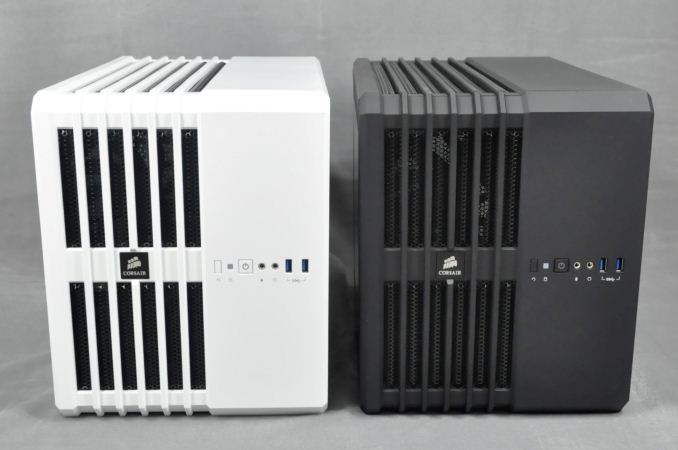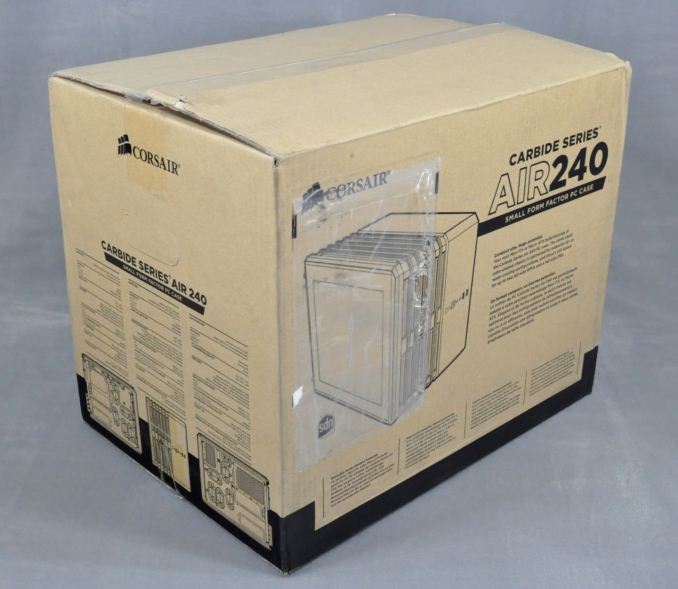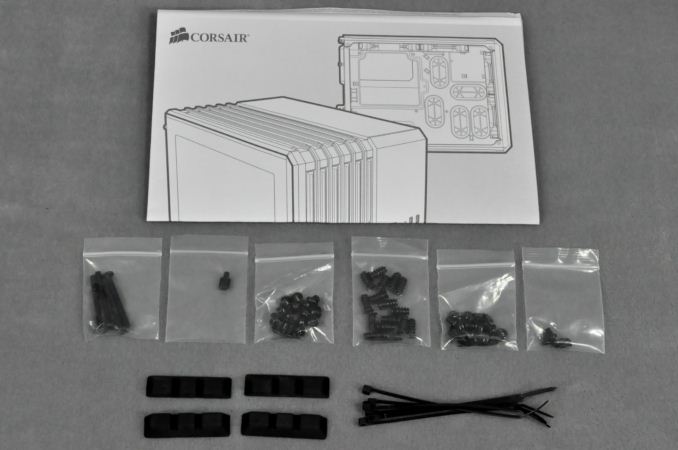Corsair Carbide Air 240 Case Review
by E. Fylladitakis on August 15, 2014 6:00 AM EST- Posted in
- Cases/Cooling/PSUs
- Corsair
- ATX
- Case
- Carbide

Introduction
Corsair is a company originally known for their quality RAM modules, but they have expanded into many other areas of the PC market. Today, Corsair is one of the most important players in the computer hardware market, with the company offering dozens of products, designed to cater to as wide an array of people as possible. Looking just at their computer cases, Corsair offers five series with an ever-expanding number of products, ranging from super-large cases for enthusiasts to low-cost products for budget-driven users. In this review, we will look at one of their latest case designs, the Carbide Air 240.
Compact cases and small form factors are all the rage nowadays. Some companies, such as Silverstone, have focused many of their R&D resources on the development of such designs. The first compact case that we reviewed from Corsair was the Obsidian 250D, a cubic Mini-ITX case of not so compact proportions; instead, it was designed to fit fairly powerful combinations of hardware. This is also true of the Carbide Air 240 that we will be reviewing today. Although it is designed to fit up to Micro-ATX motherboards, the Carbide Air 240 can accommodate very powerful hardware, including two top-tier GPUs and dual liquid cooling radiators. We will look at its design, features, strengths, and weaknesses in this review.
| Corsair Carbide Air 240 Specifications | ||
| Motherboard Form Factor | Mini-ITX, Micro-ATX | |
| Drive Bays | External | - |
| Internal |
3 x 2.5" or 3.5" (rear cage) 3 x 2.5" (top cage) |
|
| Cooling | Front | 2 x 120 (2 x 120mm included) |
| Rear | 2 x 80mm (optional) | |
| Top | 2 x 120mm (one included) | |
| Right Side | 1 x 120mm (optional) | |
| Bottom | 2 x 120 (optional) | |
| I/O Port |
2 × USB 3.0 2 × USB 3.0 1 × Headphone 1 × Mic |
|
| Power Supply Size | ATX | |
| Clearances | HSF | 125mm |
| PSU | 200mm | |
| GPU | 360 mm | |
| Dimensions |
~315mm × 265mm × 400mm (H×W×D) ~12.4in × 10.43in × 15.75in (H×W×D) |
|
| Pricing | ~$90 online | |
Packaging and bundle
The Corsair Carbide Air 240 comes supplied in a simple, brown cardboard box. The artwork on the box is limited to schematics of the case and text. Inside the box, the lightweight case is protected by thick polystyrene foam slabs and is wrapped in a nylon bag.
Corsair kept the items bundled with the Carbide Air 240 down to a minimum but organized them well, supplying each type of screw inside a separate nylon bag. There are also four rubber feet for the case and a few short cable ties.












63 Comments
View All Comments
darkbreeze - Friday, November 14, 2014 - link
The biggest problem with this case has nothing to do with the drive or lack therof. Seems no decent GPU cards will fit due to card HEIGHT not length. Even the ones made for mini-ITX enclosures don't fit as seen here:http://www.tomshardware.co.uk/answers/id-2363784/a...
Zak - Wednesday, April 15, 2015 - link
I want this case for a gaming-only build that will only have couple of SSDs in it so I'm happy with the absence of 5.25" bays. I had 540 and it was too large with tons of wasted space and was taking up too much floor space so I went back to a regular tower for that build.RealAntithesis - Tuesday, March 13, 2018 - link
A few years after the date of this article, but hey: I built a Ryzen system using this case. Main reason I chose the case was its looks and small footprint. However, some issues I've come across that people should consider when buying:1. As mentioned in the article, there is no room for a second dual slot video card at the bottom of the case - some matx motherboards have a 16x slot at the bottom, but the Air 240 can't accommodate one without some case modification work due to lack of a fifth expansion bay. A 2nd video card could fit in the in the third expansion slot though (assuming the motherboard has a 16x pcie slot here).
2. Also as mentioned in the article, air coolers are limited due to the height restrictions. However, the noctua c14s does fit, but only in its single fan configuration placing the fan close to the motherboard. I also rotated the heat sink 180 degrees to avoid getting too close to the ram sticks. The c14s takes up a large chunk of the horizontal area of the side panel window, but gives decent cooling performance (and it fits, albeit fairly tightly with surrounding components).
3. The side window is made of plastic. Due to the lack of clearance, the 6 and 8 pin power cables from my 1080ti have squeezed up against the window. Unfortunately, with the video card routinely getting to 80C (it's hot over here, and that's running at 60% power limit), the plastic window now has little grooves where the wires from the power cable were touching, presumably from the heat. Obviously, I need to work on temps, but the side window should be made out of tempered glass like some others are.
4. The case panels are made out of plastic, including the bars covering the fan vents on the top. While this probably reduces weight, this unfortunately means it's not very strong. It's quite easy to press slightly on the panel, causing it to bend and causing the spinning fan on the other side to hit something, maybe the grill (I'm not sure, but I wasn't about to do that again if I could help it).
5. The metal grill and / or the plastic between the top fan and plastic panel tends to vibrate with the fan, resulting in a very audible and annoying hum or buzzing noise. Then I have to press in various places to touch the sweet spot to quieten it down again. It's quite annoying.
6. That's it. Apart from all the above, it's otherwise a decent case, but I'm thinking of switching it out for another.